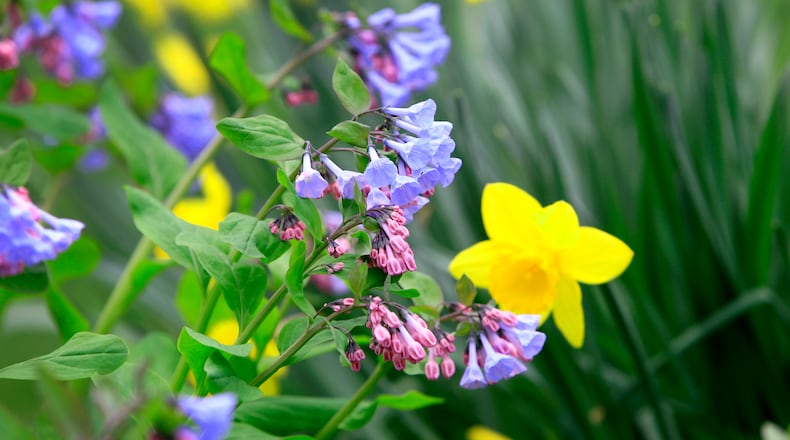Weather Trends
High temperatures are usually above 60 degrees the week ahead, with the chances of 70s or better rising to 70 percent, a ten percent increase over last week’s chances. Cold in the 50s occurs rarely, but if it does appear, it is typically on the 21st and 24th.
Chances of frost are low, but tender plants are in some danger after the passage of May’s fourth cold front on the 15th and fifth cold front on the 20th. The 18th, 19th, and 22nd are the wettest days in the period; the 20th and the 21st are the least likely to bring precipitation.
Natural Calendar
When azaleas lose their petals, daisies and the first clematis and the first cinquefoil open all the way, the first strawberry ripens, and the first swallowtail butterflies visit the late star of Bethlehem and bleeding hearts. The last quince flowers fall, and lilacs decay. The yellow heads of meadow goat’s beard appear along the roadsides next to the sweet clover foliage spreading out for June. The pink and violet of sweet rockets replace the purple wild phlox in the woods and pastures.
All of the buttercups blossom, and by the end of the week, the first pyrethrums presage the poppies. Horseradish and comfrey are budding. Locust leaves emerge, their first flowers now open as the high canopy slowly closes in.
Rich-scented four-petaled flowers of the silver olive are still open. Lizard’s tail has at least three leaves now. Golden ragwort, wild phlox, pale violet Jacob’s ladder, Jack-in-the-pulpit, columbine and wild geraniums are still in full flower. Multiflora roses and wild raspberries are budding.
Black walnuts and oaks become the major sources of pollen. Cedar waxwings migrate up the rivers as the last buckeye flowers fall. Half the goslings are bigger than galoshes. Adult geese begin their restless summer flights and calls now that the goslings are growing up.
When-Then Phenology for May
When hummingbirds arrive at feeders, thrushes, catbirds and scarlet tanagers arrive, too.
When strawberries come into full bloom, then wild cucumber will be sprouting along the rivers.
When summer phlox are 2-feet tall, catbirds call in the bushes.
When apple blossoms fall, then rare, medicinal golden seal blooms in the woods.
When mayflies swarm by the water, spitbugs make their spittle shelters in the parsnips, and the first cut of hay is underway.
When chives bloom in the garden, then crappie fishing peaks in the shallows.
When flower clusters of the sweet-gum tree fall, then the first strawberry could be red.
When azaleas lose their petals, morel season is about over for the year, and swallowtail butterflies come looking for flowers.
Journal
“This collection is like a diary of my expeditions, which makes me set out again with renewed joy, or like an optical device which places them once again before my eyes. It is the chain of accessory ideas that makes me love botany. It brings together and recalls to my imagination all the images which most charm it: meadows, waters, woods, solitude and above all the peace and tranquility which one can find in these places — all of this it instantly conjures up before my memory.” Jean-Jacques Rousseau, on his herbarium in Reveries of the Solitary.
Often I read through my journals from past years, going back over notes about flowers, butterfly sightings, rereading descriptions of walks in the woods along rivers or lakes. I find that the diary brings images easily to mind, giving color not only to the reimagined landscape but shape to specific years and then to all the years.
Looking back over each day’s observations, I see something like an autobiography in the entries I have collected. Like Rousseau, I live again, in this way of nature, my movement both linear and radial, binding together consciousness of years with birdcalls and the length of leaves and the opening of flowers.
That narrow focus creates continuity, connection with a vague mood of the people and events of my life, providing feeling and sense of the whole. The myopia does not exclude other acts but instead places them almost inconspicuously inside a sprawling and mottled landscape.
Its vision erases differences as much as joins them, blurring but also sorting the happenings and habitats, allowing the past, as well the future, to be a virgin time of longing and possibility.
Bill Felker is retired from WYSO-FM radio and lives with his wife in Yellow Springs.
About the Author
